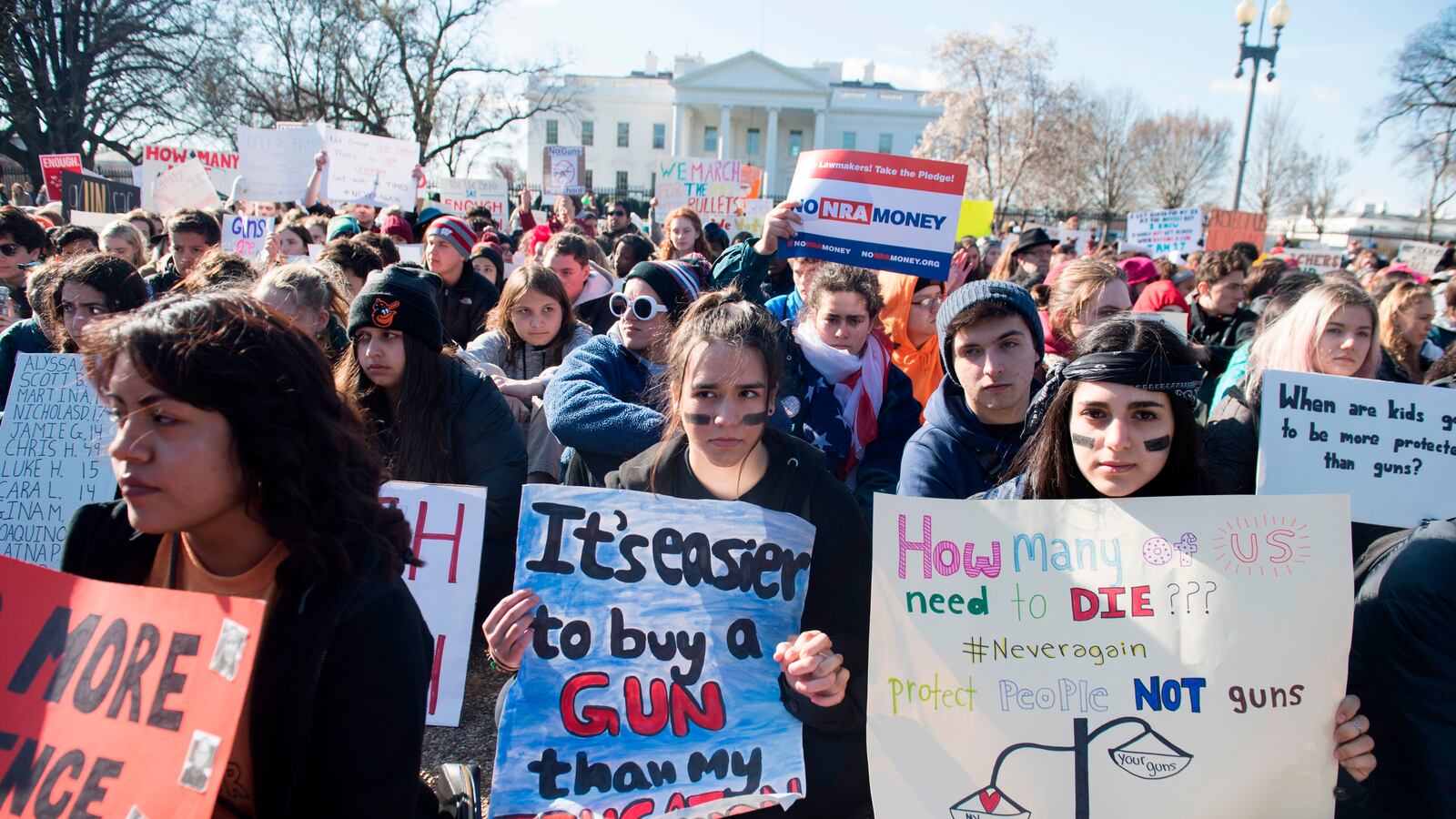Students across America left their classrooms on Wednesday to take part in a national protest pushing for stricter gun laws and memorializing those who died in last month’s school shooting in Florida.
The event was rare in its scope, with students from hundreds of schools leaving class for at least 17 minutes in memory of the 14 teens and three teachers killed at Marjory Stoneman Douglas High School in Parkland one month ago. The event continued throughout the day, with students walking out at 10 a.m. local time across the country.
“People need to start realizing that there needs to be change,” explained Zhy’yon Hoover, a sophomore at Northwest High School in Indianapolis who helped organize that school’s protest, on Wednesday morning.
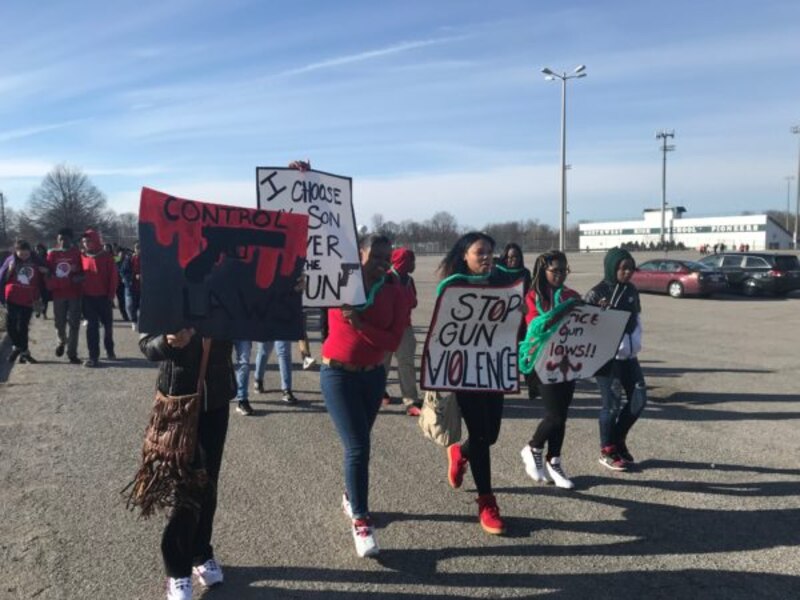
In New York City, students in the Hell’s Kitchen neighborhood chanted and carried signs reading “How many more?”
Other demonstrations were quiet: elementary school students at P.S. 40 in Manhattan stood with their parents and observed a moment of silence.
At Stoneman Douglas, students had gathered on the school’s football field by 10 a.m. David Hogg, a student who has become one of the most prominent faces of student activism after the shooting, livestreamed the walk-out and thanked school administrators for supporting the effort to remember those who died.
“They don’t have their voices, but we still do,” Hogg said.
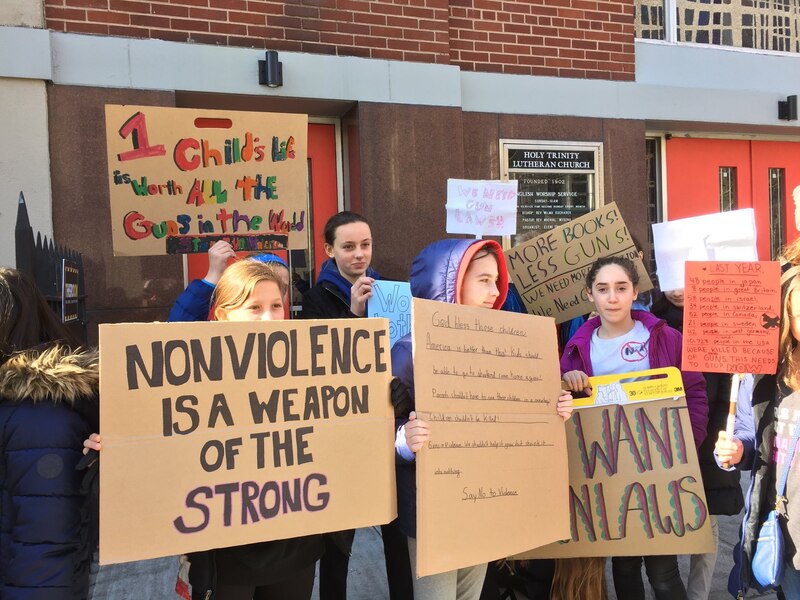
In Washington D.C., lawmakers at a U.S. Senate committee hearing on improving school safety acknowledged the event, too.
“Across the country, in a few minutes, students from across America will be exercising their First Amendment right to speak out about changes that they want on how we regulate our Second Amendment right,” said Florida Senator Marco Rubio, alluding to the uphill battle students may face in advocating for stricter gun control laws.
Moments earlier, Chuck Grassley, an Iowa Republican and the judiciary committee’s chair, said that he was introducing a new bill — the “Marjory Stoneman Douglas High School Memorial Act of 2018” — in order to conduct research on school safety and threat assessment training for schools. But Diane Feinstein, the ranking Democrat on the committee, focused her remarks on limiting access to guns.
“High school students who have lost their friends are literally begging us to take action to get these guns off the streets and out of our schools,” she said.
In several districts in the Northeast, a snow day — normally a cause for celebration among students — derailed walk-out plans. In Vermont, some students said they would delay the protest until Thursday, but in Portland, Maine, two dozen middle schoolers still marched with signs like, “Will your school be next?” and “Is it your opinion or the NRA’s?” In Massachusetts, despite widespread school closures, many students still planned to march to the statehouse in protest.
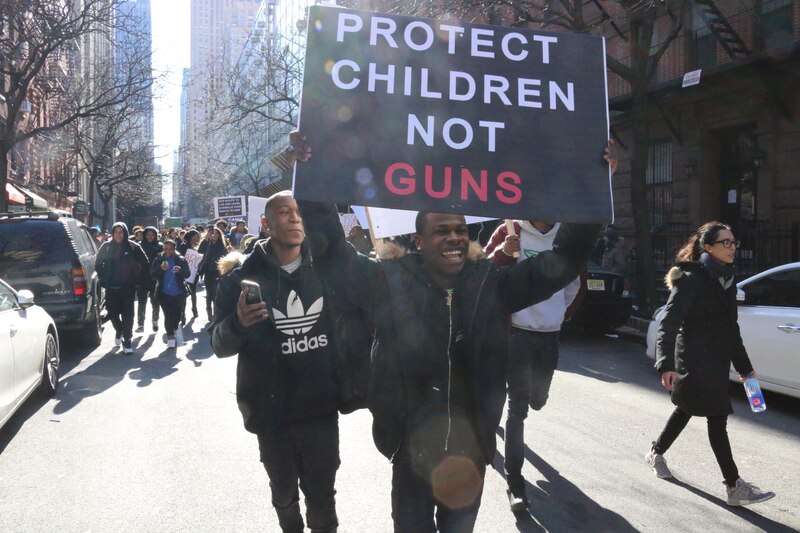
At some schools, protesting students needed to navigate school policies designed to minimize disruption. But some politicians and school officials have offered their support for the event: New York Governor Andrew Cuomo and AFT President Randi Weingarten walked out of a Manhattan school and participated in a “die in.” Both the Boston and Philadelphia school districts tweeted support for protesting students.
Meanwhile, students who have long been fighting — and experiencing the consequences of — gun violence had mixed feelings about the national attention the Parkland shooting has focused on the issue.
In Detroit, many students participating were remembering their own, less-publicized tragedies. Darryl Erwin, 17, recalled his mother’s shoulder being grazed when someone fired bullets at several houses on his block.
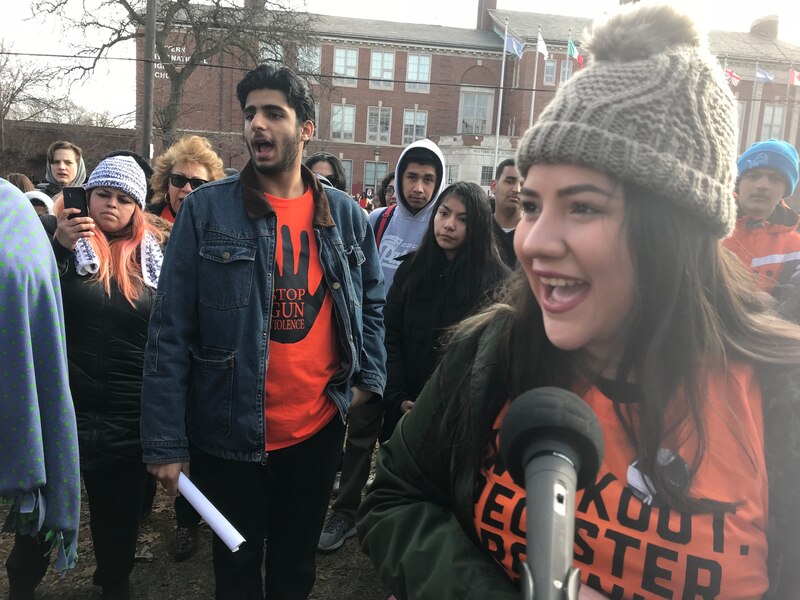
“I don’t want the school shootings to overshadow the youth violence shootings that happen every day,” said Brandon Warren, a high school senior in Indianapolis who had two classmates killed last spring and started a local anti-violence group as a result. Students at his school were allowed to walk out of classes but not leave the school due to safety concerns.
In Colorado, which has a tragic history of school shootings, hundreds of Denver high school students marched out of class and converged on the state Capitol steps to chant and wave signs decrying gun violence.
Some were holding hand lettered signs: “Protect Kids, Not Guns,” one said. “Keep Your Guns Out of My School.” “Am I Next?”
“We’ve been existing in a world of violence since we were born,” one student said.
Gov. John Hickenlooper, a Democrat, briefly address the crowd, saying into a megaphone: “You look pretty fired up,” he said into a megaphone. “A big part is just the fact you took the initiative to come out here and show up. It’s a big part, but it’s not the only part.”
Another national protest is planned for next month: a “day of action” on April 20, the anniversary of the 1999 shooting at Colorado’s Columbine High School. That protest, sponsored by the National Education Association, the American Federation of Teachers, and the Network for Public Education among others, encourages events at schools focused on pushing policy changes to reduce gun violence.
Melanie Asmar, Monica Disare, Dylan Peers McCoy, Amanda Rahn, Kimberly Hayes Taylor, and Alex Zimmerman contributed reporting.


